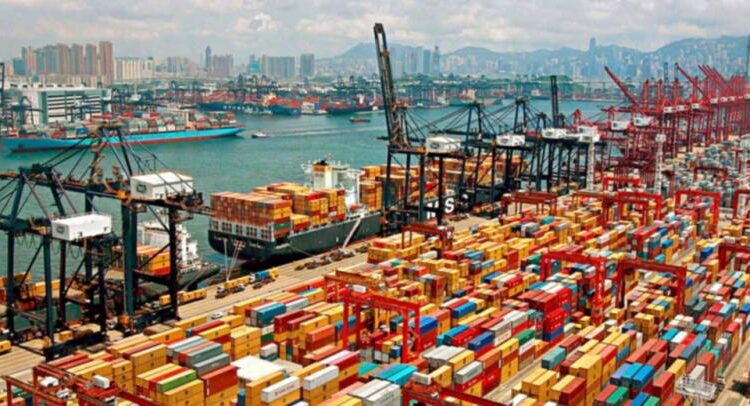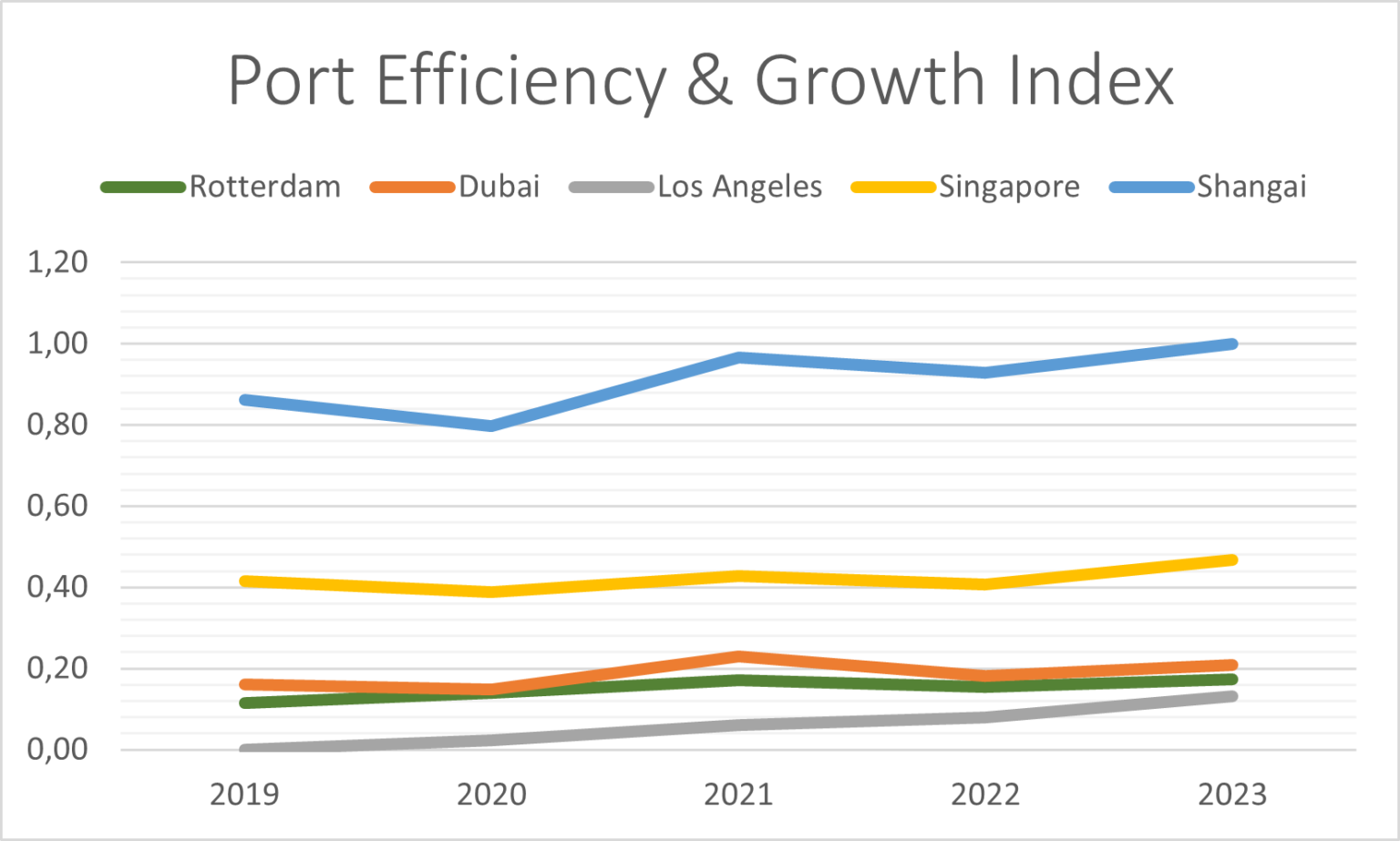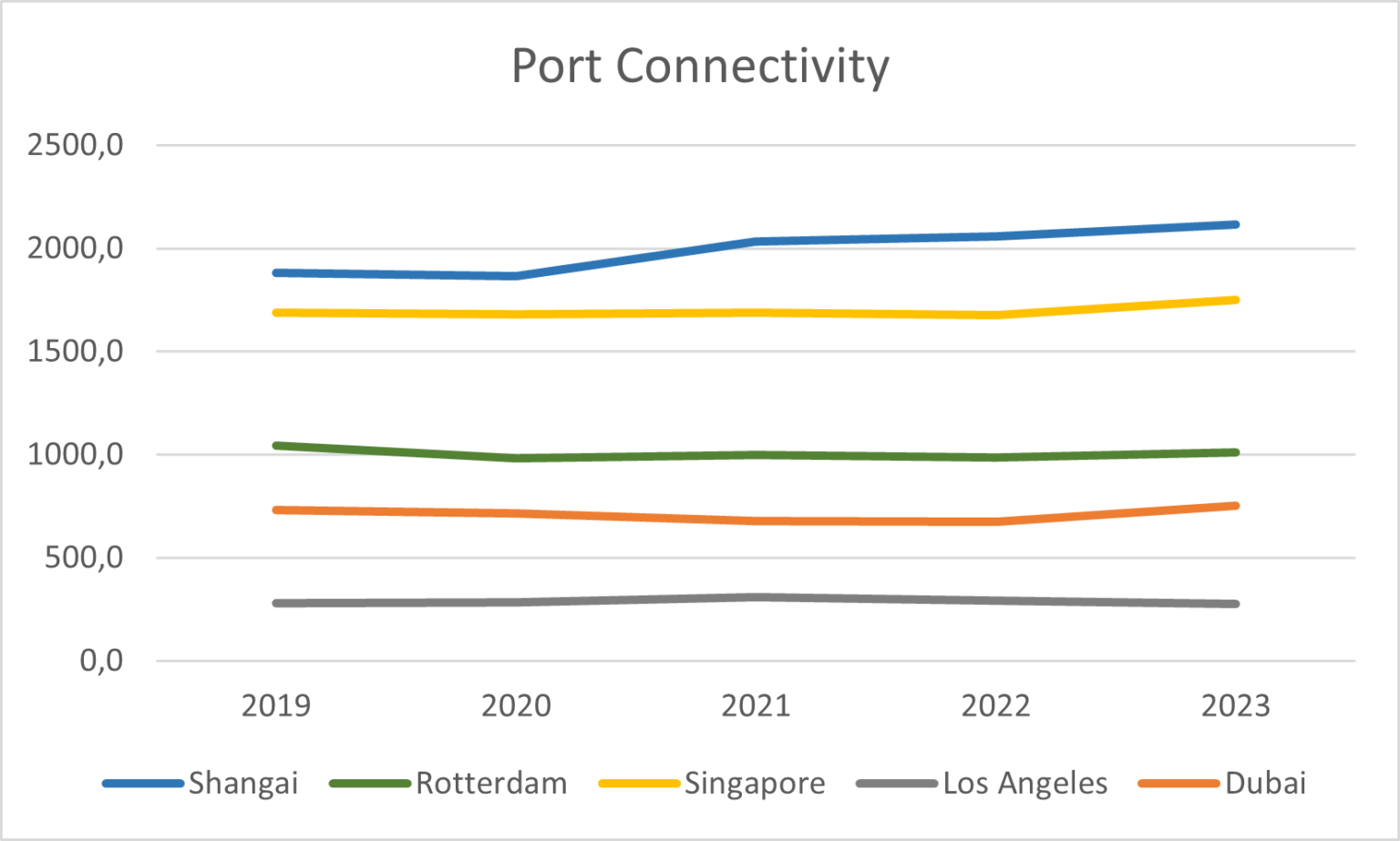
Comparative analysis of key global container ports
PIRAEUS : Container News recently conducted a comparative analysis of five major container ports: Port of Los Angeles, Port of Shanghai, Port of Jebel Ali, Port of Rotterdam and Port of Singapore.
The analysis aimed to evaluate the relative competitiveness of these ports by examining two critical indicators: Port Investments and Port Throughput, forming a compound indicator, as well as Port Connectivity. Open-source data from various organizations were used to build these indicators, revealing key trends in the shipping sector.
The examining period was the last five years (2019-2023).
Key Findings from the Compound Indicator: Port Investments and Throughput

The compound indicator, combining Port Investments and Port Throughput, placed the Port of Shanghai and the Port of Singapore in the highest ranks among the five. Despite facing two significant declines in its performance in 2020 and 2022, the Port of Shanghai managed to recover swiftly, regaining its growth momentum. This resilience highlights Shanghai’s capacity to rebound from global disruptions, such as the pandemic, and re-establish its dominance in international shipping.
On the other hand, the Port of Singapore has maintained a relatively stable performance, displaying a steady growth trend throughout 2023. Singapore’s position as a key transshipment hub in Southeast Asia has allowed it to weather fluctuations in global trade, making it a consistent performer in the sector.
Meanwhile, the ports of Los Angeles, Jebel Ali, and Rotterdam showed similar performance levels, with only slight variations. While the Port of Jebel Ali ranks marginally higher than the other two, the difference is not substantial, suggesting fierce competition among these ports for market share. The convergence of their performances by 2023 reflects a broader alignment in their strategies, as all three ports seek to maintain relevance in the rapidly evolving global shipping landscape.
Port Connectivity Rankings

When evaluating Port Connectivity, the analysis revealed a similar pattern of dominance by Shanghai and Singapore. Shanghai emerged as the top performer, followed closely by Singapore. The two ports have consistently maintained high levels of connectivity, a crucial factor in their ability to attract more shipping lines and handle higher container volumes.
The Port of Rotterdam secured third place, displaying stable performance throughout the analysis period. Its strategic location in Europe and strong infrastructure has enabled it to remain a key player in global shipping, despite increasing competition from Asian ports.
The Port of Jebel Ali followed in fourth place, exhibiting a slightly growing trend in connectivity. This port’s expansion and modernization efforts have contributed to its rising status, particularly as Dubai seeks to strengthen its role as a logistics hub in the Middle East.
The Port of Los Angeles ranked last in terms of connectivity, with relatively stable performance. While the port remains a crucial gateway for trade between the United States and Asia, it faces growing competition from ports with stronger infrastructure investments and connectivity, particularly in Asia and the Middle East.
The comparative analysis demonstrates the growing competitiveness among the world’s major container ports. The Port of Shanghai and the Port of Singapore remain at the forefront, thanks to their substantial investments and robust throughput and connectivity performance. Their ability to maintain or recover growth, even in challenging periods, highlights their centrality in global trade networks.
However, the convergence of the Port of Los Angeles, the Port of Jebel Ali, and the Port of Rotterdam in terms of performance signals an intensifying race among these ports. In conclusion, as global trade continues to evolve, the ongoing competition between these ports will likely sharpen, driven by infrastructure investments and technological advancements.
Source : Container News
